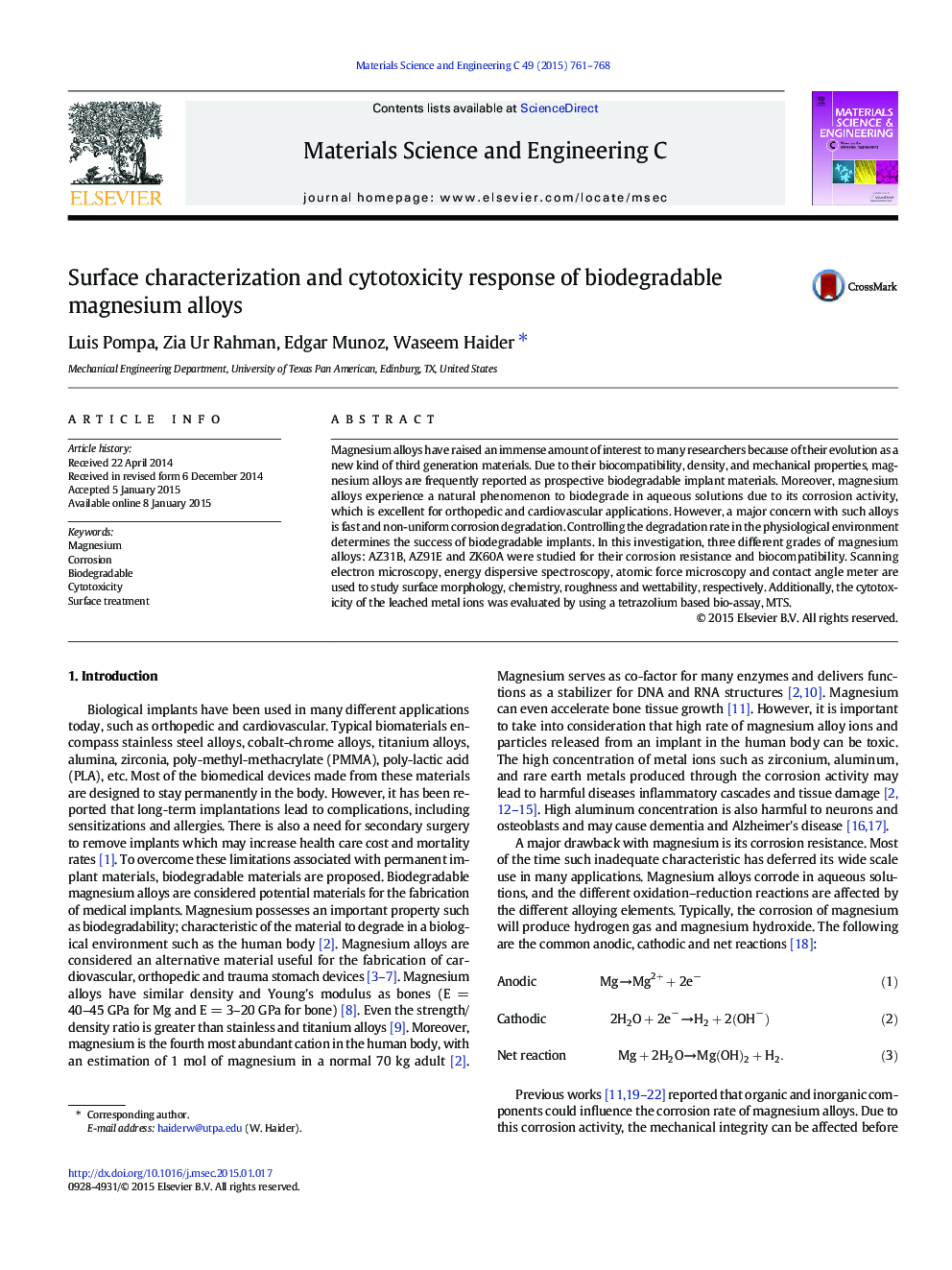| کد مقاله | کد نشریه | سال انتشار | مقاله انگلیسی | نسخه تمام متن |
|---|---|---|---|---|
| 1428234 | 1509172 | 2015 | 8 صفحه PDF | دانلود رایگان |
• Micro-textured features formed after the anodization of magnesium alloys.
• Contact angle increased and surface free energy decreased by anodization.
• Corrosion rate increased for anodized surfaces compared to untreated samples.
• Cell viability was greater than 75% implying the cytocompatibility of Mg alloys.
Magnesium alloys have raised an immense amount of interest to many researchers because of their evolution as a new kind of third generation materials. Due to their biocompatibility, density, and mechanical properties, magnesium alloys are frequently reported as prospective biodegradable implant materials. Moreover, magnesium alloys experience a natural phenomenon to biodegrade in aqueous solutions due to its corrosion activity, which is excellent for orthopedic and cardiovascular applications. However, a major concern with such alloys is fast and non-uniform corrosion degradation. Controlling the degradation rate in the physiological environment determines the success of biodegradable implants. In this investigation, three different grades of magnesium alloys: AZ31B, AZ91E and ZK60A were studied for their corrosion resistance and biocompatibility. Scanning electron microscopy, energy dispersive spectroscopy, atomic force microscopy and contact angle meter are used to study surface morphology, chemistry, roughness and wettability, respectively. Additionally, the cytotoxicity of the leached metal ions was evaluated by using a tetrazolium based bio-assay, MTS.
Journal: Materials Science and Engineering: C - Volume 49, 1 April 2015, Pages 761–768
